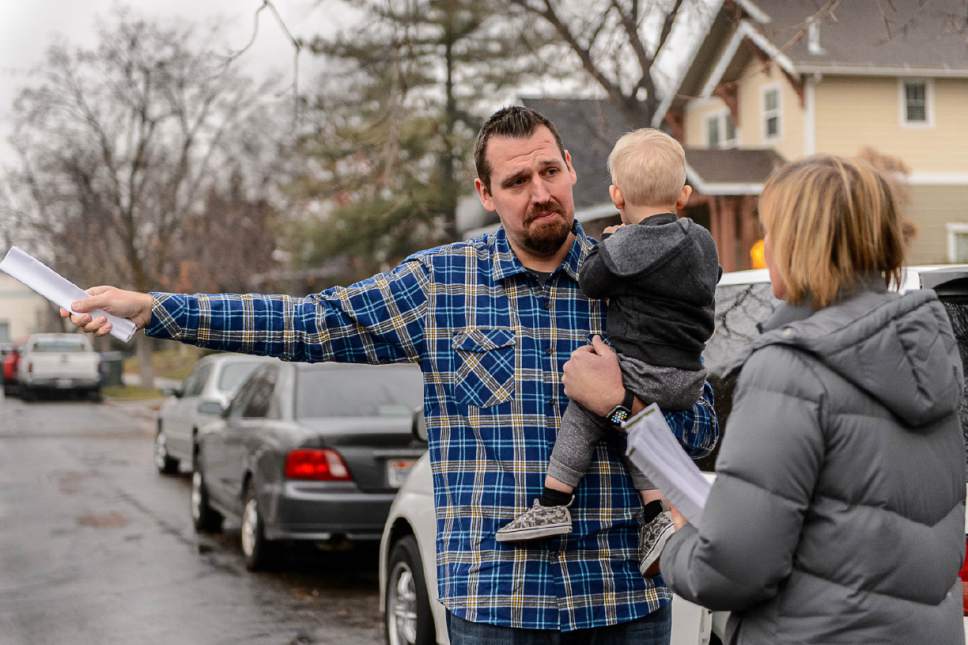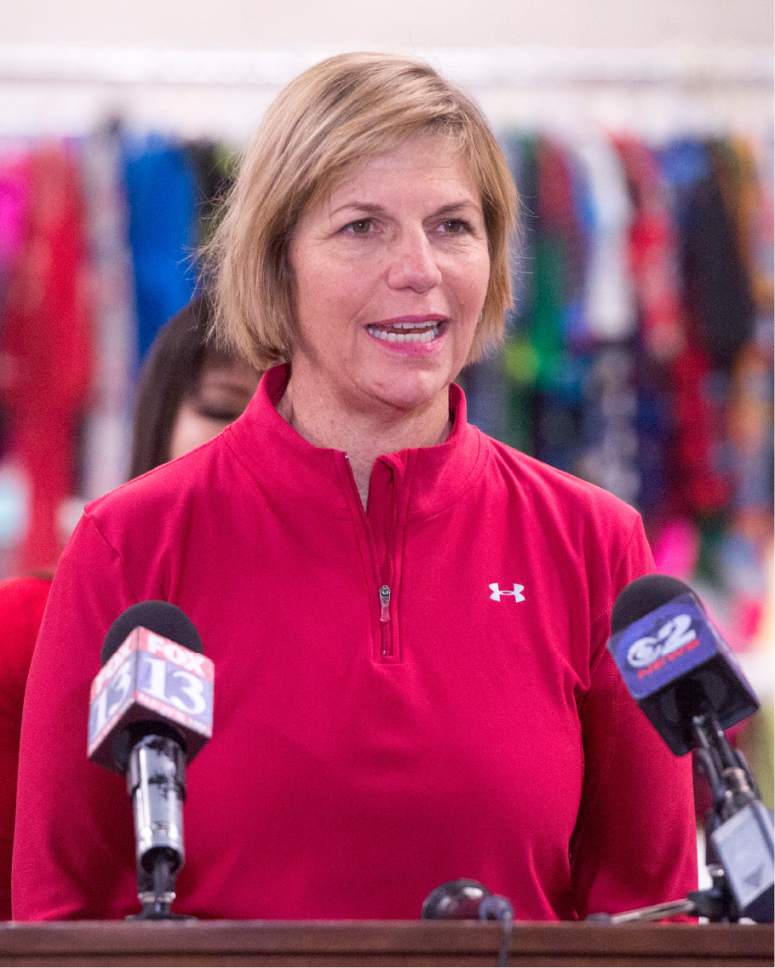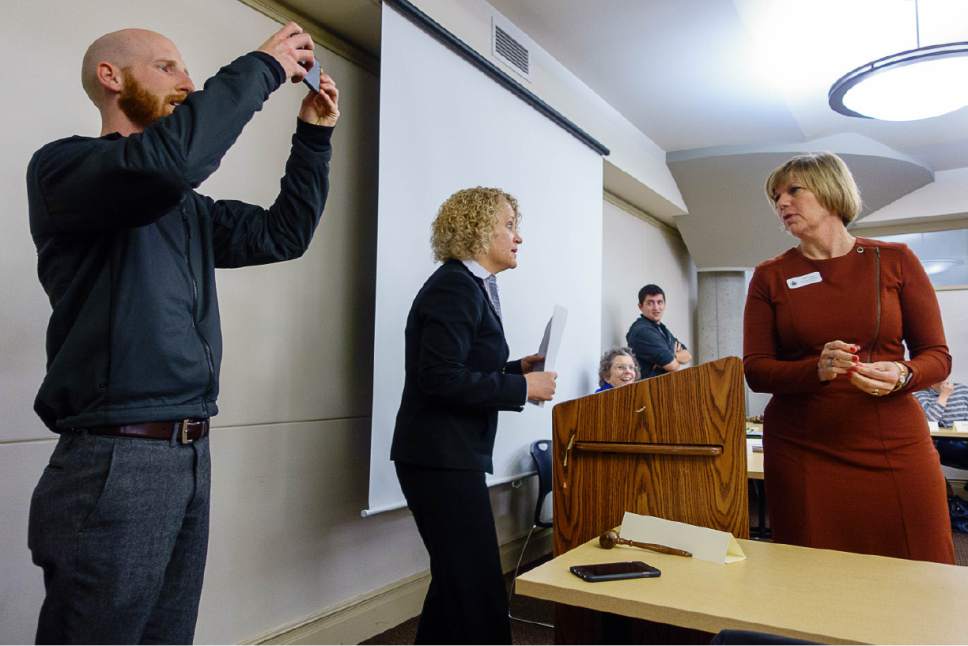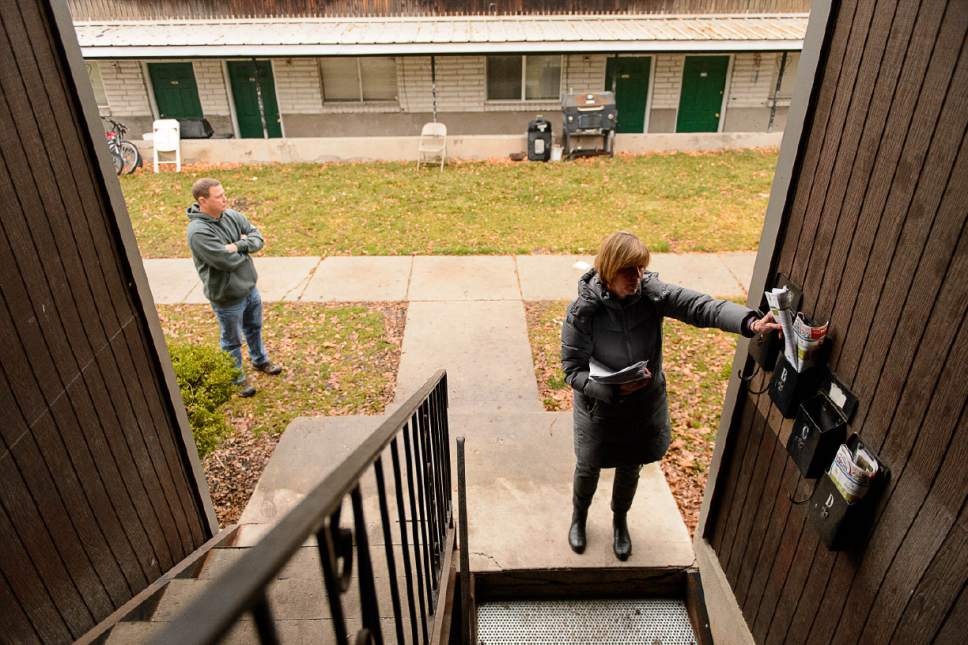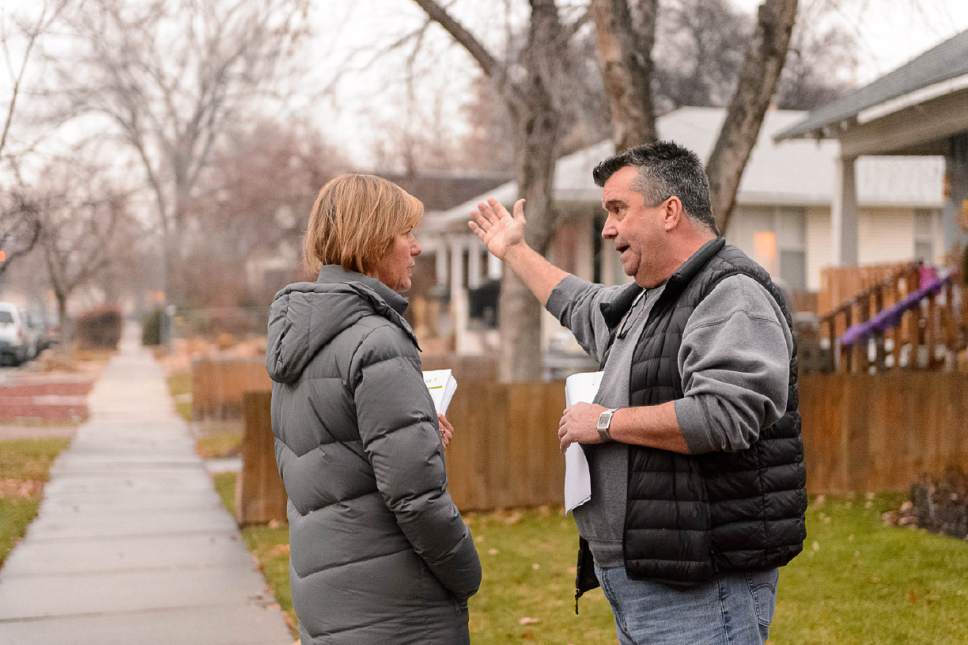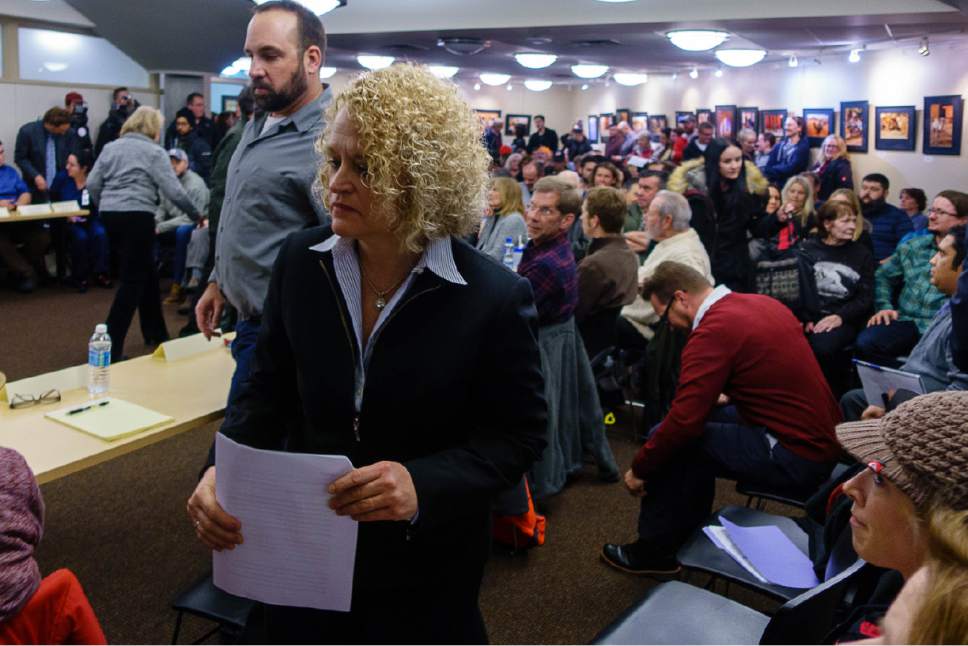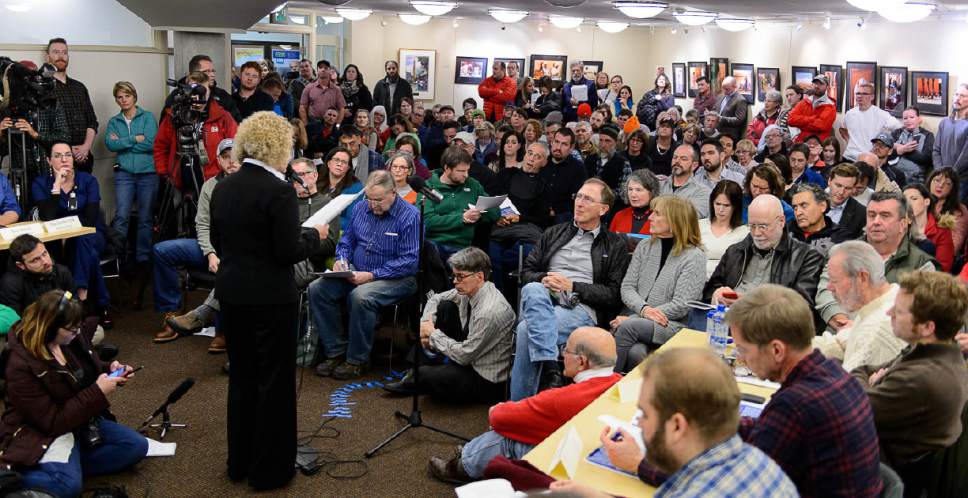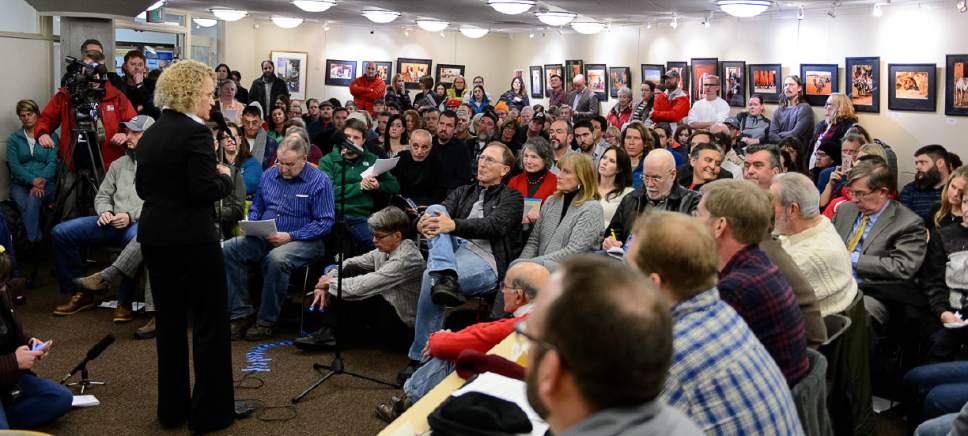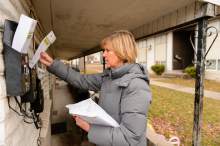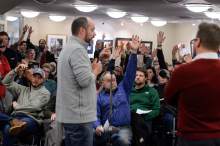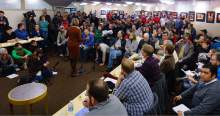This is an archived article that was published on sltrib.com in 2017, and information in the article may be outdated. It is provided only for personal research purposes and may not be reprinted.
When Salt Lake City Mayor Jackie Biskupski said the City Council would eventually sign a resolution to back four homeless shelter sites, she qualified it with "whether we do Simpson or don't do Simpson, or we have a new site or we don't have a new site."
At least two opponents of the proposed site at 653 E. Simpson Ave. saw a potential opening in those comments.
On Wednesday, Councilwoman Lisa Adams said she was "encouraged" that Biskupski might rethink the site, which abuts a neighborhood of single-family homes and against which speakers railed for more than two hours during the council's public input session Tuesday night.
Adams said she met with the mayor earlier Tuesday and that Adams proposed cutting the site total from four — 275 W. High Ave., 131 E. 700 South and 648 W. 100 South are the others — to three.
"Last night in that meeting, all of the discussion was about Simpson, with one exception," Adams said. "I'd like to see us come up with a configuration that works with those three sites."
Some residents sat cross-legged among the Sugar House Community Council's horseshoe desks while others spilled into the hallway and up the stairs of the Sprague Library on Wednesday night to hear the mayor answer questions from voters.
Biskupski addressed the crowd for nearly 20 minutes, pleading with them to embrace a Sugar House shelter and a broader plan that she regards as politically daring but needed and overdue. The city needs to stop shouldering such a large portion of the state's burden, she said, and key players are lined up to make that happen through housing, services and other collaborative efforts.
One listener, former Sugar House Council member Christopher Thomas, asked whether there was anything they could do to help, drawing scattered applause.
But the discontented soon made their doubts clear.
As Biskupski highlighted community workshops that the city says will influence the design of the sites, one man in the crowd said, "We don't want to pick a color." Biskupski then said she and the council "are taking the hardest hits on this," followed by laughter from the crowd and the mayor's call for the next question.
Nor did it mollify them to hear that a site at 1565 S. Foothill was not so much docked for its proximity to the regional drug trade as the historical value of the Mormon meetinghouse there.
Biskupski afterward said the engagement needs to continue. Asked to explain her mention of possibly withdrawing the Simpson site, she said: "What I'm saying is I want to hear the concerns, and I want to be able to have a chance to respond to those with information that we simply haven't done a good job of sharing."
Lawmakers have indicated that they will provide $27 million over three years to help build an unspecified number of shelters and fund targeted programming they expect to reduce the homeless population. Their lone request: 500 beds and demonstrable progress between legislative sessions.
The power to purchase property belongs to the city's administration, but the City Council pushed in late September to build four 150-bed sites instead of two 250-bed sites. When Biskupski signed off, multiple council members have said, it was on the condition that she would have their backing during a sure-to-be controversial siting process.
But the council decided not to vote Dec. 13 on a resolution to support the shelter sites after learning that Councilwoman Erin Mendenhall was opposed to a 653 E. Simpson Ave. site. Mendenhall, whose district is a few blocks from Simpson, said she'd seen the resolution, but until the day of the site announcements, "no one ever asked me how I was going to vote on it."
"I've taken heat from my peers and had political repercussions for speaking out against Simpson, but now it seems that they are recognizing there was truth in what I said," she said. Mendenhall lost to Charlie Luke in Tuesday's straw-poll vote to become council vice chairperson for 2017.
Adams, whose district includes 653 E. Simpson, has since said that she would have voted against the resolution on Dec. 13, too.
Unlike Adams, Mendenhall said she wouldn't reduce the number of sites because she fears that a facility dedicated to single women, which she has championed, would miss the cut.
Councilman Andrew Johnston and Luke said the purpose of moving to more sites was to increase the effectiveness of each and to lessen the impact on affected communities. Without 653 E. Simpson Ave., the city would have no sites east of 200 East, Johnston said.
"It can't just go in one specific area of the city or the county or the region," Johnston said. "Fundamentally, that's the problem I'm going to have if this gets any traction."
Conversation about withdrawing a site may be "premature," he said, even if he was surprised by Biskupski's comments.
Mendenhall said she was "shocked." Biskupski "sat through one of the first formal meetings she sat through in months and listened to the public feedback and her resolve cracked," the councilwoman said.
Councilman James Rogers doubted whether Biskupski's comments represented an opening for 653 E. Simpson opponents.
"I don't think she's backing down," he said. "I don't. And I hope that she doesn't."
Discussions about the Simpson Avenue site always included the assumption that it would be a better environment for children and young families than a commercial or industrial area, Rogers said.
"For me, that was the whole purpose behind the Simpson site, was to create opportunities for these families to be successful," he said.
Salt Lake County Mayor Ben McAdams said the county's programming efforts don't hinge on whether the city chooses four sites, three sites or two.
Biskupski said she met with McAdams on Wednesday and asked him to help spread the thought process behind their plan.
"I know they're under a lot of pressure, and I'm empathetic to that," said McAdams, who has criticized the city's lack of public input leading up to the site selection. "I think what's happening [now] is the city is listening to the public, and I think that's appropriate."
That is, McAdams added, so long as the debate is resolved by the Jan. 23 start of the legislative session.
Lawmakers supported the shift to four sites during talks this fall, said Council Chairman Stan Penfold, and they understood the challenges of acquiring four sites that met all the criteria on an accelerated timeline. Should the city break ground on one, two or even three sites while continuing to court public opinion, the Legislature will still see the required progress, he said.
Luke said he's "not supportive at all" of Adams' proposal to go to three sites, but that it's too soon to fret about appearances or wonder what Biskupski might do.
"I don't think the optics have been great on this at all," Luke said. "I think there's a lot that's been problematic. But I do think that it is largely optics, and as far as I have heard, the administration continues to move forward."
Twitter: @matthew_piper


